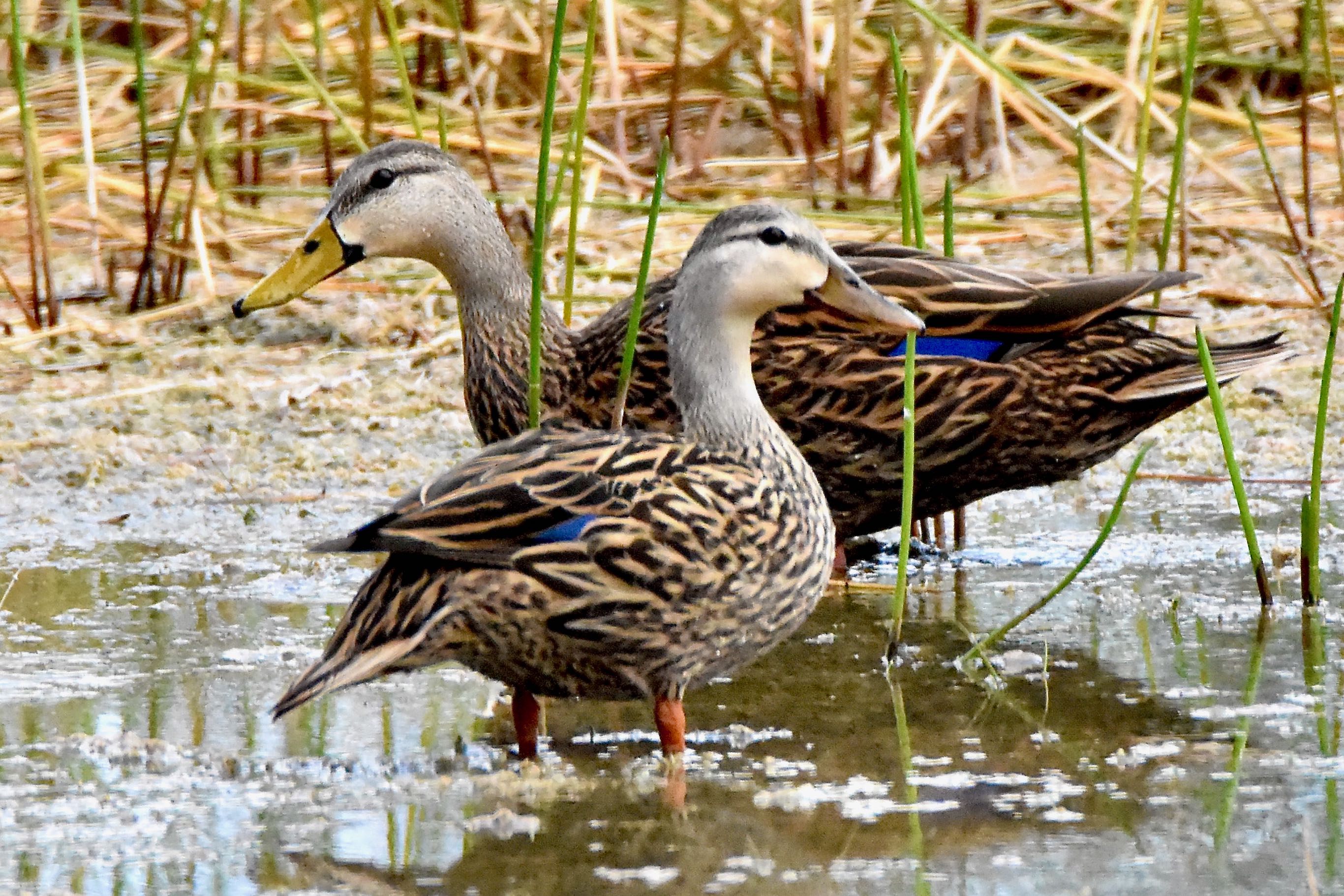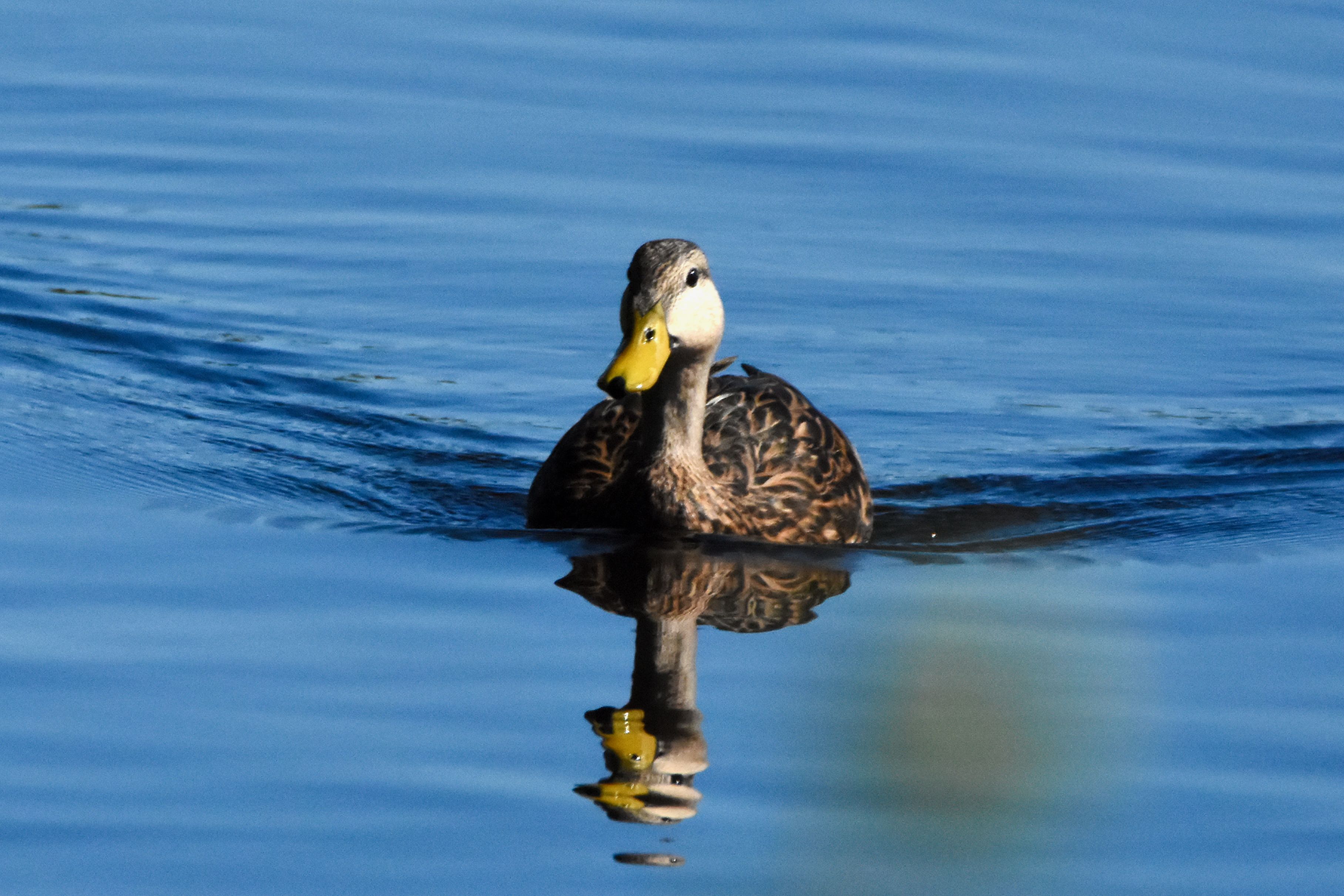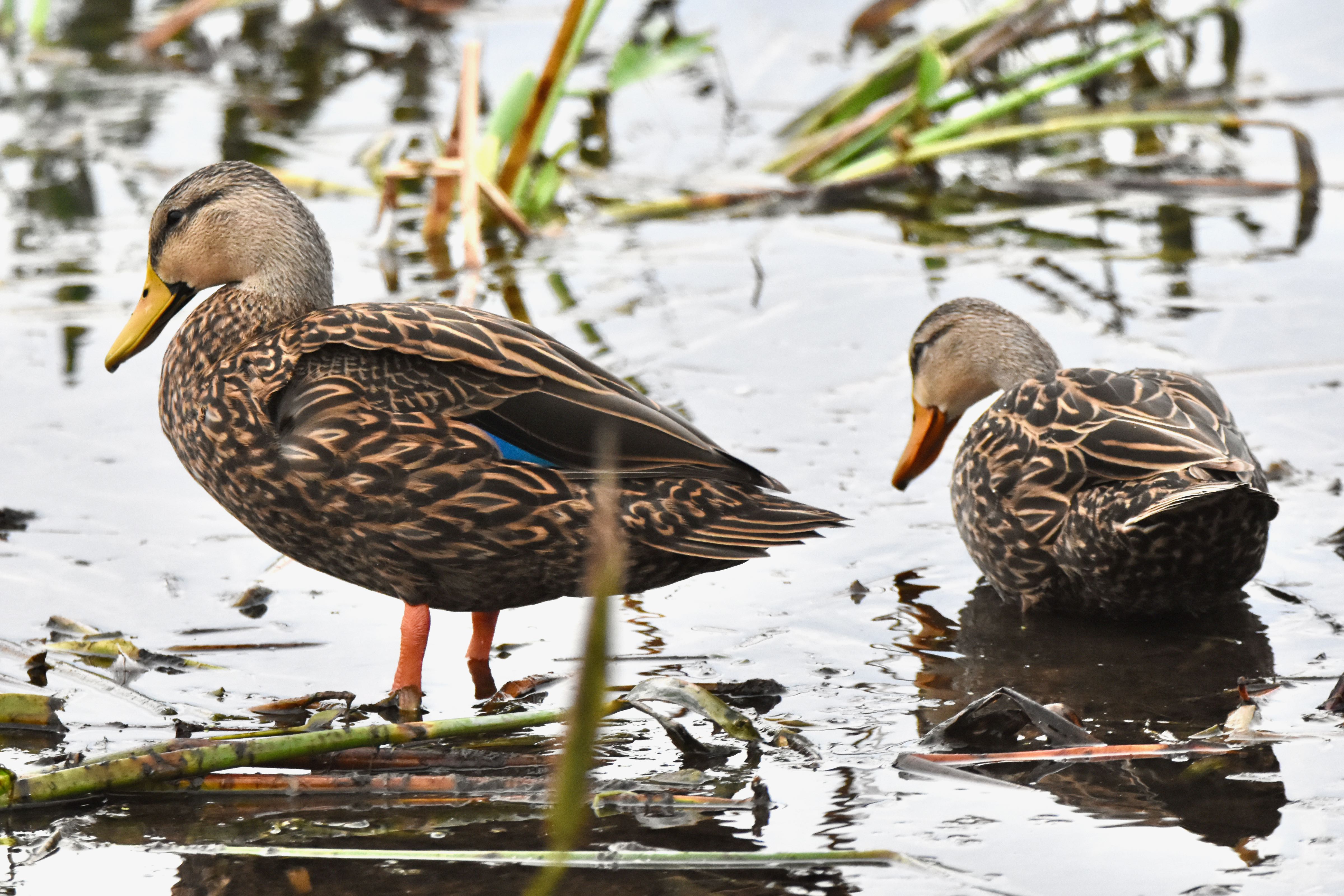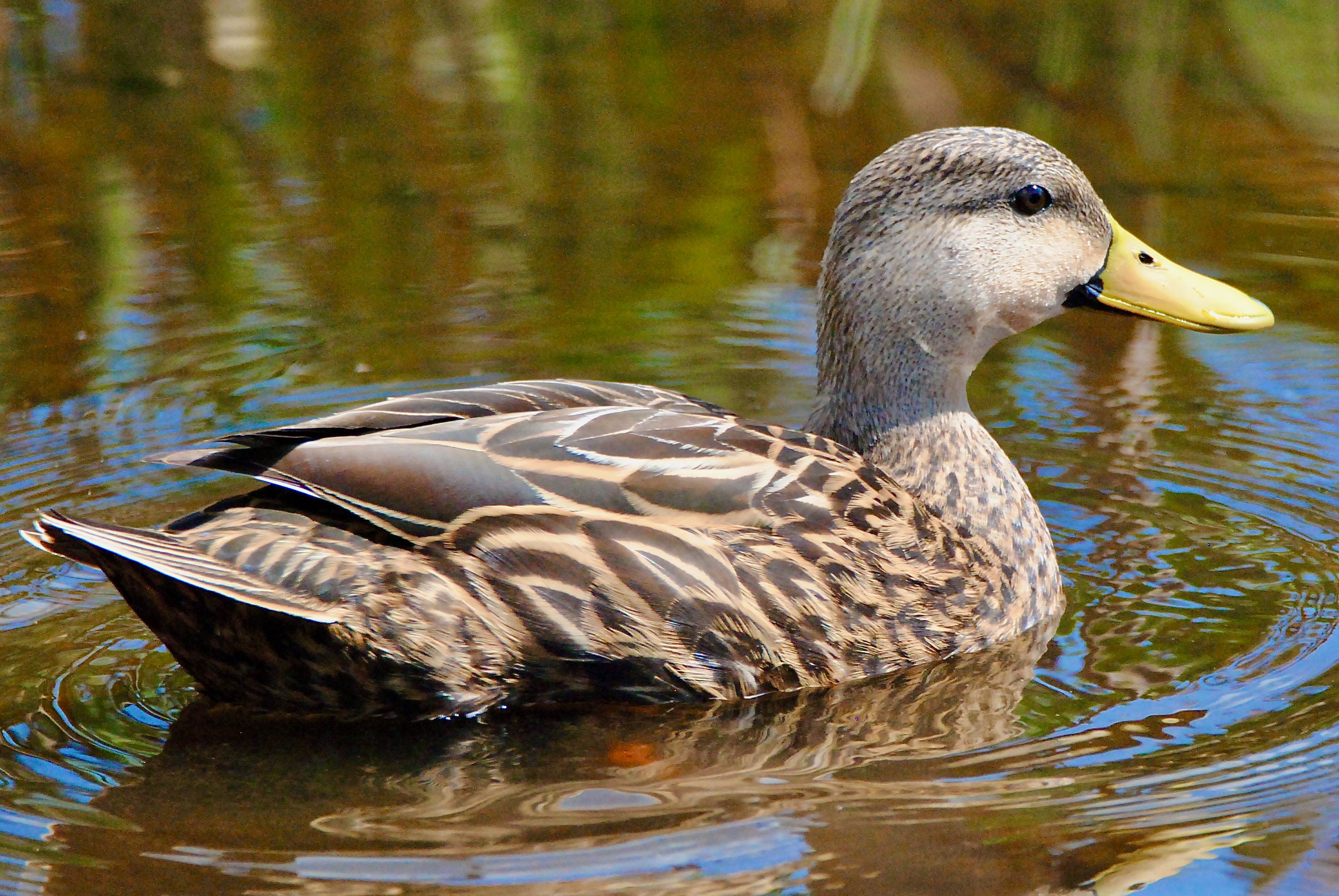
Mottled ducks, photographed at Cypress Creek North Natural Area, Jupiter, Palm Beach County, in April 2018.
It might be said that the mottled duck, Anas fulvigula, has a complex. Or, more accurately, part of a complex, the mallard complex, a group of 20 duck species worldwide, including the mallard, that are closely related. And thanks to us humans, one of the mottled duck's biggest problems.
The mottled duck is a dark brown bird with a light brown head. It has white underparts; the back of the wings are greenish blue. Males and females are similar in size and appearance except for the bill — its greenish yellow in males, orange with black markings in females.They are about two feet long, with a wingspan of three feet, more or less.
Mottled ducks are found in watery habitats throughout Florida's peninsula and along the Gulf Coast in Alabama, Mississippi, Louisiana and Texas, with a few outlying populations in Kansas and Colorado. It is one of the few ducks that doesn't migrate and the only duck adapted to breed in southern wetlands. They feed by dabbling, dunking their heads in water as they look for food, be it seeds, aquatic invertebrates or aquatic vegetation.
Mottled ducks face two major problems. The first is loss of habitat, same problem facing other bird species, particularly those who rely on wetlands. The second is more unusual. Because of they are so closely related, mottled ducks will mate with mallards. Mallards are migratory in the wild, flying south for the winter, then back north to mate with their own kind. They're not the problem. Feral mallards — birds that once were pets and released into the wild or who otherwise escaped captivity are a big problem. These birds don't migrate, so they'll hang here year round and mate with native ducks, including the mottled. The offspring is a hybrid between the two species.
Mottled ducks are listed as "least concern" by the International Union for Conservation of Nature, but other organizations say measures need to be taken to protect the mottled duck's future.
Plant matter makes up the majority of a mottled duck's diet — grass seeds, roots and the like — but they'll also eat a fair amount of snails, fish, clams, crayfish and bugs, according to the Florida Fish and Wildlife Conservation Commission.
Mottled ducks are ground nesters. Both male and female will scout together for a site, usually in dense vegetation. They will form a depression in a clump of grass and line it with vegetation and bits of down from the female's breast. Females lay between five and 13 eggs per clutch, which will incubate for about four weeks. Breeding season begins in January, peaks in March and April, and concludes in July.
Within a day or two, the young ducklings are ready to clamber out of their nest and swim about with their parents. Within 50 days, they are capable of short bursts of flight to escape a predator. Within 60 to 70 days, they are ready for sustained flight.
Other common names: Florida duck, Florida mallard and dusky duck. They are members of Anatidae, the duck family.
Cypress Creek North Natural Area



